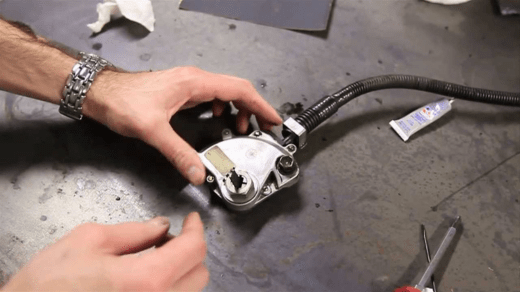To put the lower unit of an outboard motor or sterndrive unit into neutral, follow these general steps. Keep in mind that the specific procedures may vary depending on the make and model of your boat’s engine, so always refer to the owner’s manual for your specific engine for precise instructions:
Materials You’ll Need:
- Boat with an outboard motor or sterndrive unit
- Owner’s manual for the engine (for model-specific instructions)
Steps:
- Ensure Safety:
- Before working on the boat or its engine, make sure you are in a safe location, and the engine is turned off. Ensure that you’re not in a high-traffic area and that there are no swimmers or obstacles nearby.
- Access the Engine Controls:
- Locate the engine control panel or throttle and gear shift lever on your boat. The location and type of controls can vary depending on the make and model of your boat.
- Shift Lever Position:
- Identify the shift lever or control lever. In most cases, the gear shift lever has three positions: forward, neutral, and reverse. The neutral position is typically located in the middle, and it’s where you want to place the lever to put the lower unit in neutral.
- Move the Lever to Neutral:
- Gently move the shift lever to the neutral position. You should feel a distinct “click” or resistance when the lever is in the neutral position. The gear shift lever should be centered between the forward and reverse positions.
- Confirm Neutral:
- While the lever is in the neutral position, verify that the lower unit is indeed in neutral by attempting to rotate the propeller by hand. If the propeller turns freely without resistance, the lower unit is in neutral. If it’s difficult to turn or you feel resistance, the lower unit may not be in neutral, and you should recheck the lever’s position.
- Start the Engine (if needed):
- If you plan to start the engine, make sure it’s in neutral before starting. Engines are typically started in neutral to prevent sudden movement of the boat.
- Shift Out of Neutral (when ready):
- When you’re ready to operate the boat, you can shift out of neutral into either forward or reverse, depending on your intended direction of travel.
- Monitor Engine Behavior:
- While operating the boat, keep an eye on the engine’s behavior. If you notice any unusual sounds or difficulties with shifting, stop the engine and check the gear shift lever and lower unit for any issues.
Remember that these are general steps, and the specific procedures for putting the lower unit in neutral may vary based on the make and model of your boat’s engine. Always refer to your engine’s owner’s manual for accurate instructions, and if you’re uncertain or encounter any problems, consider consulting a marine mechanic or technician for assistance. Safety is paramount when working with boats and engines, so exercise caution and follow all safety guidelines.
Also Read:
https://octopuspost.com/rocking-chair-how-to-refinish-a-rocking-chair/
https://octopuspost.com/how-to-refinish-adirondack-chairs/
https://octopuspost.com/how-to-reforge-talismans/
https://octopuspost.com/how-to-refresh-bully-sticks/






